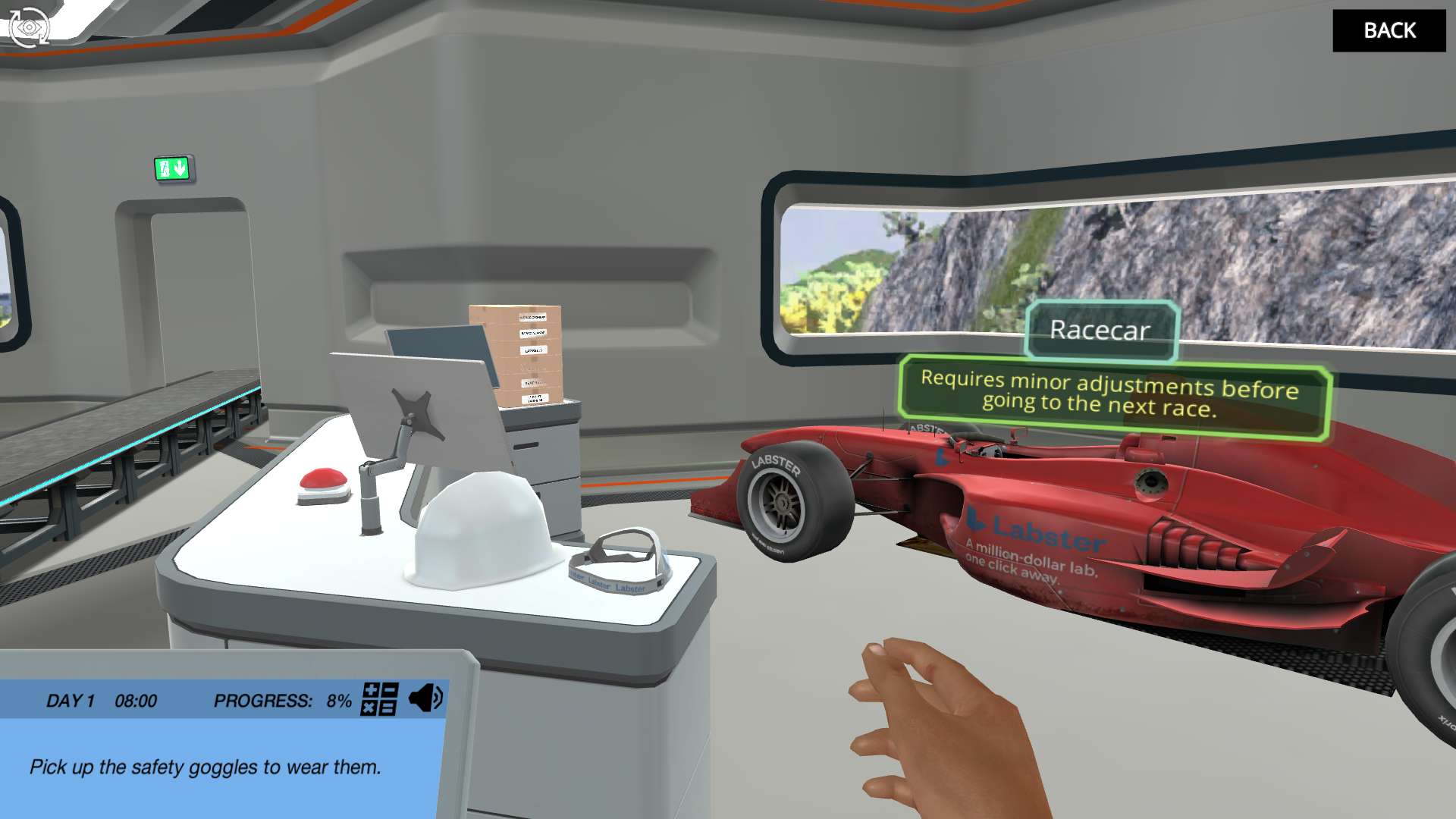Heading 1
Heading 2
Heading 3
Heading 4
Heading 5
Heading 6
Lorem ipsum dolor sit amet, consectetur adipiscing elit, sed do eiusmod tempor incididunt ut labore et dolore magna aliqua. Ut enim ad minim veniam, quis nostrud exercitation ullamco laboris nisi ut aliquip ex ea commodo consequat. Duis aute irure dolor in reprehenderit in voluptate velit esse cillum dolore eu fugiat nulla pariatur.
Block quote
Ordered list
- Item 1
- Item 2
- Item 3
Unordered list
- Item A
- Item B
- Item C
Bold text
Emphasis
Superscript
Subscript
About This Simulation
Join a team of motorsport engineers and learn the basics of Newton’s laws of motion. Understand the basic principles of passive and active safety while driving a high-class race car.
Learning Objectives
- Describe Newton's first law
- Define inertia and frames of reference
- Derive Newton's second law
- Identify the action and reaction forces in different situations
About This Simulation
Lab Techniques
Related Standards
- HS-ETS1-2, HS-PS2-1
- 2.4 Newton’s First Law
- 2.6 Newton’s Second Law
- 2.5 Newton’s Third Law and Free-Body Diagrams
- 2.7 Applications of Newton’s Second Law
- 3.7 Free-Body Diagrams for Objects in Uniform Circular Motion
- 2.2 – Forces
Learn More About This Simulation
Enter the race car mechanics lab
Do you know why Labster’s race cars win so many motorsport championships? Because our drivers dare to reach the maximum potential of themselves and their cars. Motorsport drivers not only need all parts of their car to help them accelerate, but they also need to feel safe in doing so. In this simulation, we will use Newton’s laws of motion to break down the passive and active safety features of a race car to enable our drivers to move faster in the safest way possible.
Understanding inertia
Have you noticed that when driving a vehicle and using the brakes to stop, your body continues moving forward? In the first mission, you will use Newton’s first law of motion to understand why this happens, and the importance of optimizing a car’s features to prevent drivers from hurtling forward when suddenly braking at high speeds.
Newton’s second law of motion
In order to understand Newton’s second law of motion, observe the motion of boxes as a result of external forces. From this mission, you will understand how friction between the tires and the road impacts the acceleration of a race car.
Action and reaction forces
In most interactions, there is a pair of forces acting on the two interacting objects. This is what Newton’s third law of motion describes. Check out examples of this law in motorsports and identify the action and reaction forces while driving.
Reference frames
Is the race car moving faster if you observe it from your seat at the stadium, from the TV, or if you are a passenger? Reference frames are used to explain how motion may be relative depending on your position as an observant. Do you have all the required knowledge to join the team of motorsport engineers?
For Science Programs Providing a Learning Advantage
Boost STEM Pass Rates
Boost Learning with Fun
75% of students show high engagement and improved grades with Labster
Discover Simulations That Match Your Syllabus
Easily bolster your learning objectives with relevant, interactive content
Place Students in the Shoes of Real Scientists
Practice a lab procedure or visualize theory through narrative-driven scenarios


FAQs
Find answers to frequently asked questions.
Heading 1
Heading 2
Heading 3
Heading 4
Heading 5
Heading 6
Lorem ipsum dolor sit amet, consectetur adipiscing elit, sed do eiusmod tempor incididunt ut labore et dolore magna aliqua. Ut enim ad minim veniam, quis nostrud exercitation ullamco laboris nisi ut aliquip ex ea commodo consequat. Duis aute irure dolor in reprehenderit in voluptate velit esse cillum dolore eu fugiat nulla pariatur.
Block quote
Ordered list
- Item 1
- Item 2
- Item 3
Unordered list
- Item A
- Item B
- Item C
Bold text
Emphasis
Superscript
Subscript
A Labster virtual lab is an interactive, multimedia assignment that students access right from their computers. Many Labster virtual labs prepare students for success in college by introducing foundational knowledge using multimedia visualizations that make it easier to understand complex concepts. Other Labster virtual labs prepare learners for careers in STEM labs by giving them realistic practice on lab techniques and procedures.
Labster’s virtual lab simulations are created by scientists and designed to maximize engagement and interactivity. Unlike watching a video or reading a textbook, Labster virtual labs are interactive. To make progress, students must think critically and solve a real-world problem. We believe that learning by doing makes STEM stick.
Yes, Labster is compatible with all major LMS (Learning Management Systems) including Blackboard, Canvas, D2L, Moodle, and many others. Students can access Labster like any other assignment. If your institution does not choose an LMS integration, students will log into Labster’s Course Manager once they have an account created. Your institution will decide which is the best access method.
Labster is available for purchase by instructors, faculty, and administrators at education institutions. Purchasing our starter package, Labster Explorer, can be done using a credit card if you are located in the USA, Canada, or Mexico. If you are outside of North America or are choosing a higher plan, please speak with a Labster sales representative. Compare plans.
Labster supports a wide range of STEM courses at the high school, college, and university level across fields in biology, chemistry, physics, and health sciences. You can identify topics for your courses by searching our Content Catalog.















